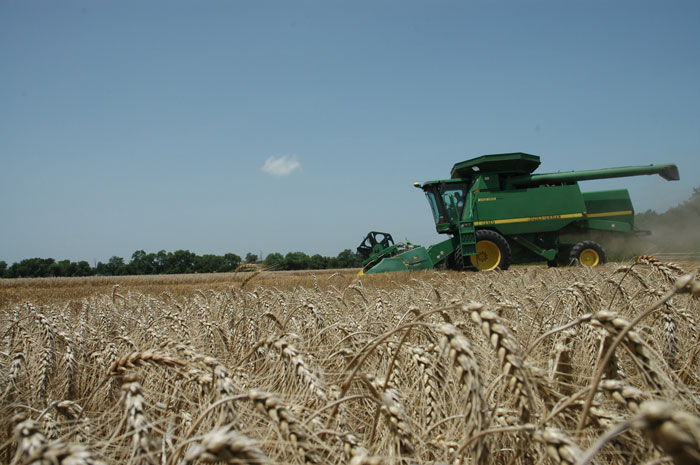April 17, 2015

Reports are surfacing that recent rains have saved a dying wheat crop. Some producers in Garfield County, Okla., report the rain improved their wheat yield potential from 15 bushels per acre to 24 bushels. The normal yield is 40 bushels per acre.
Anticipation of, and receiving a little over, one inch of rain resulted in harvest forward contract prices declining from about $5.70 to $5.05, or 65 cents. This result is an 11 percent decline in wheat prices.
Increasing yields from 15 to 24 bushels per acre is a 60-percent increase in production. Because of the rain, some producers could receive a 49 percent increase in gross income compared to price and yield potential before the rain (60 percent increase due to increased yields and an 11 percent reduction due to lower prices).
After peaking at $9.48 (KC wheat nearby contract price), wheat prices started a long-run downtrend on Oct. 22, 2010. To break the long-run downtrend, the KC wheat nearby contract price must close above $6.50.
KC wheat contract prices temporarily bottomed out at $5.23 on March 6, 2015. A short-run uptrend occurred and continued until April 6 when wheat prices peaked at $5.93. A short-run downtrend was established on April 13, 2015 when prices fell 49 cents in four days. The target price is $4.96.
If the KC wheat contract price breaks (goes below) $4.96, the next target price is about $4.53.
More factors affect Oklahoma and Texas wheat prices than Oklahoma and Texas wheat production. Together, Oklahoma’s and Texas’ five-year average wheat production is about 203 million bushels (Oklahoma 107 million bushels and Texas 96 million bushels).
Texas and Oklahoma wheat production is about 23 percent of U.S. hard red winter wheat production (893 million bushels), 9 percent of U.S. wheat production (2.162 billion bushels), and about 0.8 percent of world wheat production (25 billion bushels).
The point is that the Oklahoma and Texas wheat production is important to the bread flour market. But Oklahoma’s and Texas’ production plays only a small part in price. Other factors besides rain in Oklahoma and Texas are causing wheat prices to fall.
Part of the reason for wheat prices being near $5 is the increase in the value of the U.S. dollar against other currencies. Past articles have reported that the dollar’s increase in value may be responsible for about $1.40 of the wheat price decline.
Another reason for the price downtrend is higher U.S. and world wheat stocks. World wheat ending stocks have increased from 6.45 billion bushels for the 2012-13 marketing year, to a projected 6.562 billion bushels for the 2014-15 marketing year.
Wheat ending stocks for the 2014-15 marketing year are projected to increase 53 percent for the European Union, 66 percent for Russia, and 27 percent for Argentina. Foreign 2014-15 wheat ending stocks are projected to increase 4.9 percent.
The world has more than adequate wheat to meet current demand. However, the world’s 2014-15 stocks-to-use ratio (ending stocks divided by annual use) is projected to be 27.6 percent compared to a five-year average of 28.4 percent. “More than adequate” wheat may be available, but below average production could draw down stocks relatively quickly.
The current world wheat situation is such that an increase in potential wheat production or a decrease in potential wheat production will have a relatively large price impact. And, the market tends to get wrapped up in price.
The fact is that farm level production is more important than price. If no wheat is available to sell, price does not matter at all.
About the Author(s)
You May Also Like






